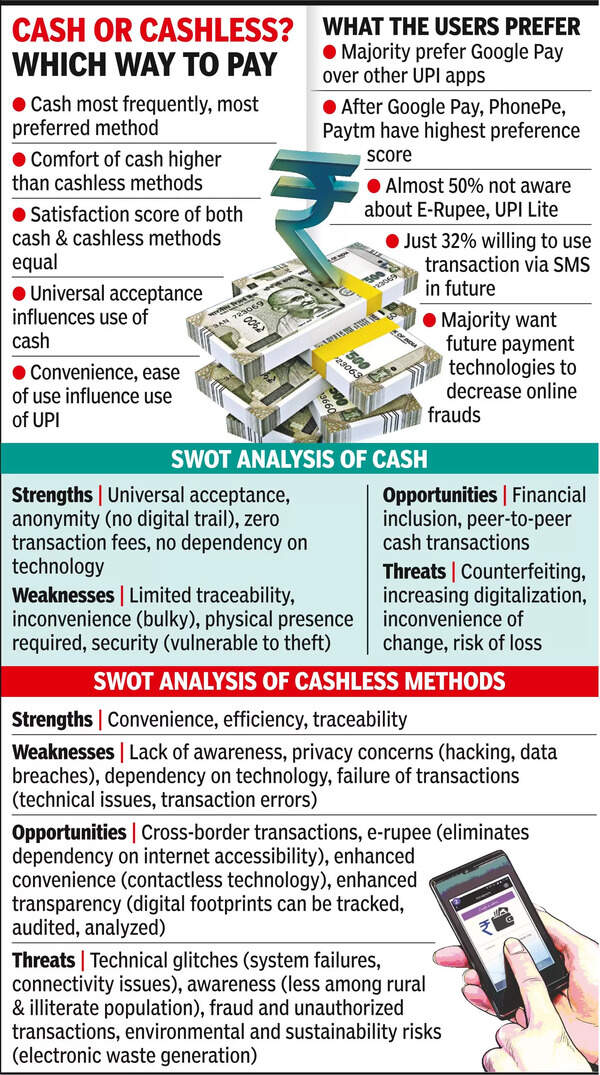- News
- City News
- vadodara News
- Study: In UPI era, women still prefer cash transactions
Trending
Study: In UPI era, women still prefer cash transactions

A study ‘exploring payment trends, technologies and user preferences’ has revealed that age, gender, occupation and education are influencing the payment choices of people.

Six third-year students of the Department of Statistics of M S University carried out the study under the guidance of professor K Muralidharan and Shreya Mathur.
“As buying groceries to paying bills, transactions have become an integral part of our daily lives. We wanted to analyze people’s perception of the current and upcoming payment methods,” said Revant Yadav, who along with Ridhi Prasad, Aakansha Tank, Preeti Singh, Vaishnavi Prajapati and Shubhangi Vyas, carried out the study.
“We studied the factors that are influencing people to transact using a particular method, carried out a SWOT analysis of the current payment methods, preference among different cashless payment apps in Vadodara and also the plausibility of upcoming payment technologies in our city,” he said.
For this, a sample size of 324 respondents (161 male and 163 female) was surveyed. The study has revealed that govt employees, homemakers and senior citizens are most associated with cash whereas private employees and students are most associated with cashless methods. Businessmen are associated with both – cash and cashless – methods.
Strikingly, women prefer cash over cashless methods. “In fact, if you don’t consider the age groups, women preferring cash over cashless methods is 3.5 times higher than that of men,” he said.
Even younger women in the age group of 18-24 to 35-44 were found to be preferring cash over cashless payment methods as compared to their male counterparts in the same age group. But in the age group of 45-54 years, men prefer cash over cashless transactions more than women.
“We also found that as the age progresses, people start preferring cash over cashless methods. In the ages above 55 years, we found that preference of both men and women was towards cash instead of cashless transactions,” he said.
Interestingly, even as most of the banks have their mobile banking apps, 60% of the respondents said that they either don’t use mobile banking apps or sometimes use it.
“There were 40% respondents who were using mobile banking apps due to the 24 x 7 banking facility. But a majority of respondents still don’t use the mobile banking apps because they feel that these apps are not user-friendly in nature,” he said.
End of Article
FOLLOW US ON SOCIAL MEDIA











